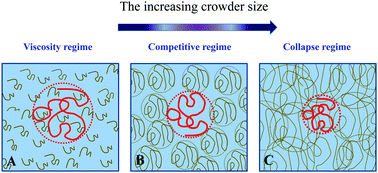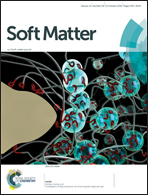Understanding chain looping kinetics in polymer solutions: crowding effects of microviscosity and collapse
Abstract
A theoretical framework based on a generalized Langevin equation with fractional Gaussian noise is presented to describe the looping kinetics of chains in polymer solutions. Particular attention is paid to quantitatively revealing crowding effects on the loop formation rate in terms of microviscosity and collapse. By the aid of empirical relations for these two crowding associated physical quantities, we explicitly investigate the relationship between the looping rate and polymer concentration, the degree of polymerization, and system parameters. According to our analysis, the dependence of the looping rate on the crowder volume fraction exhibits three typical regimes: monotonic decreasing, a non-monotonic trend and monotonic increasing. We reveal that these non-trivial behaviors can be attributed to the competition between the two opposing factors of viscosity-associated inhibition and collapse-induced facilitation of loop formation. We apply our theory to analyze the kinetics of single-stranded DNA hairpin base pairing in polyethylene glycol solutions. The theoretical results can reproduce the experimental data on the closing rate of hairpins quantitatively to a certain degree with reasonable fitting parameters. The unexpected increase of the closing rate upon the addition of increasing amounts of polymer is well rationalised. Such good agreements clearly demonstrate the validity of our theory, appropriately addressing the very role of crowding effects in the relevant kinetics.



 Please wait while we load your content...
Please wait while we load your content...